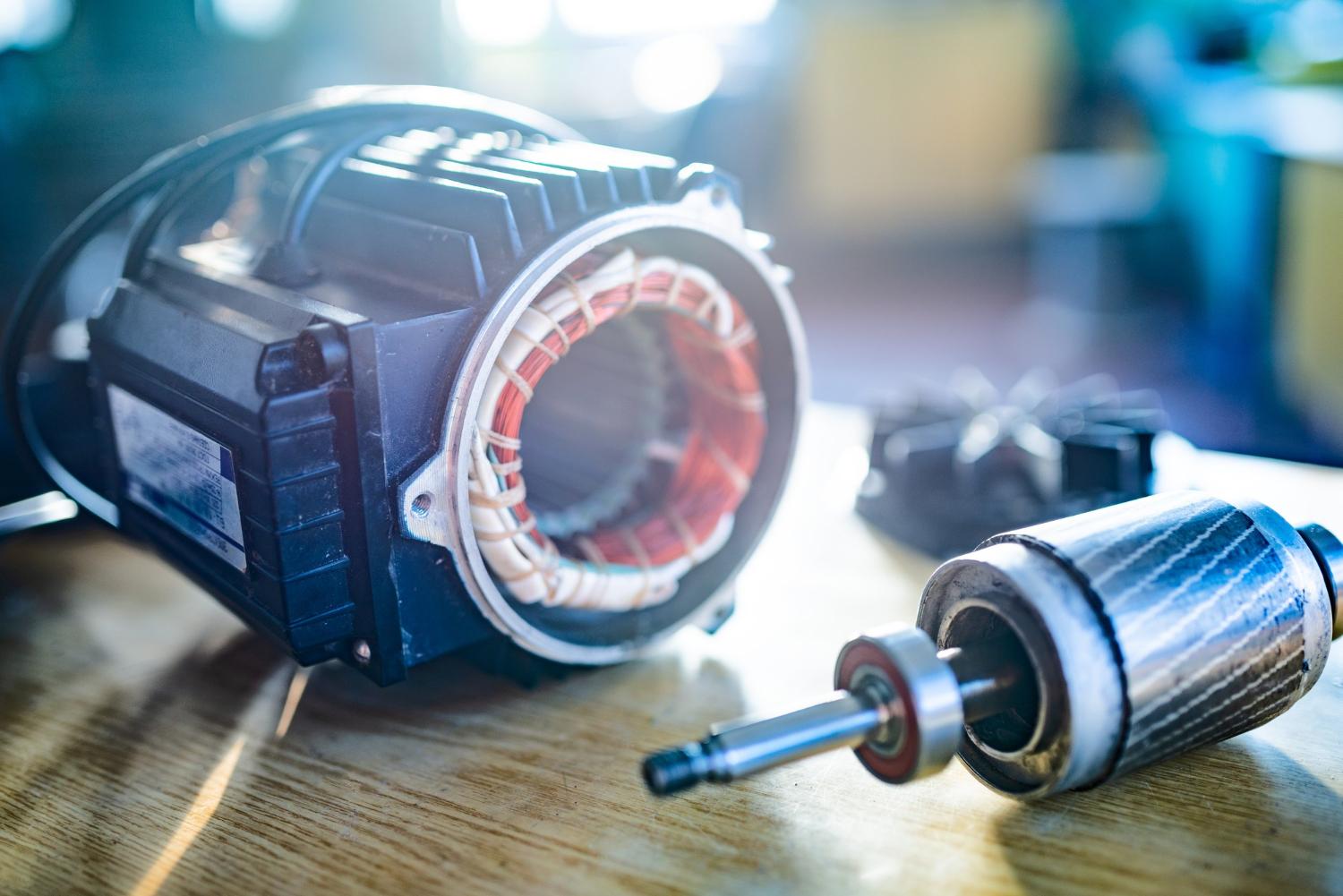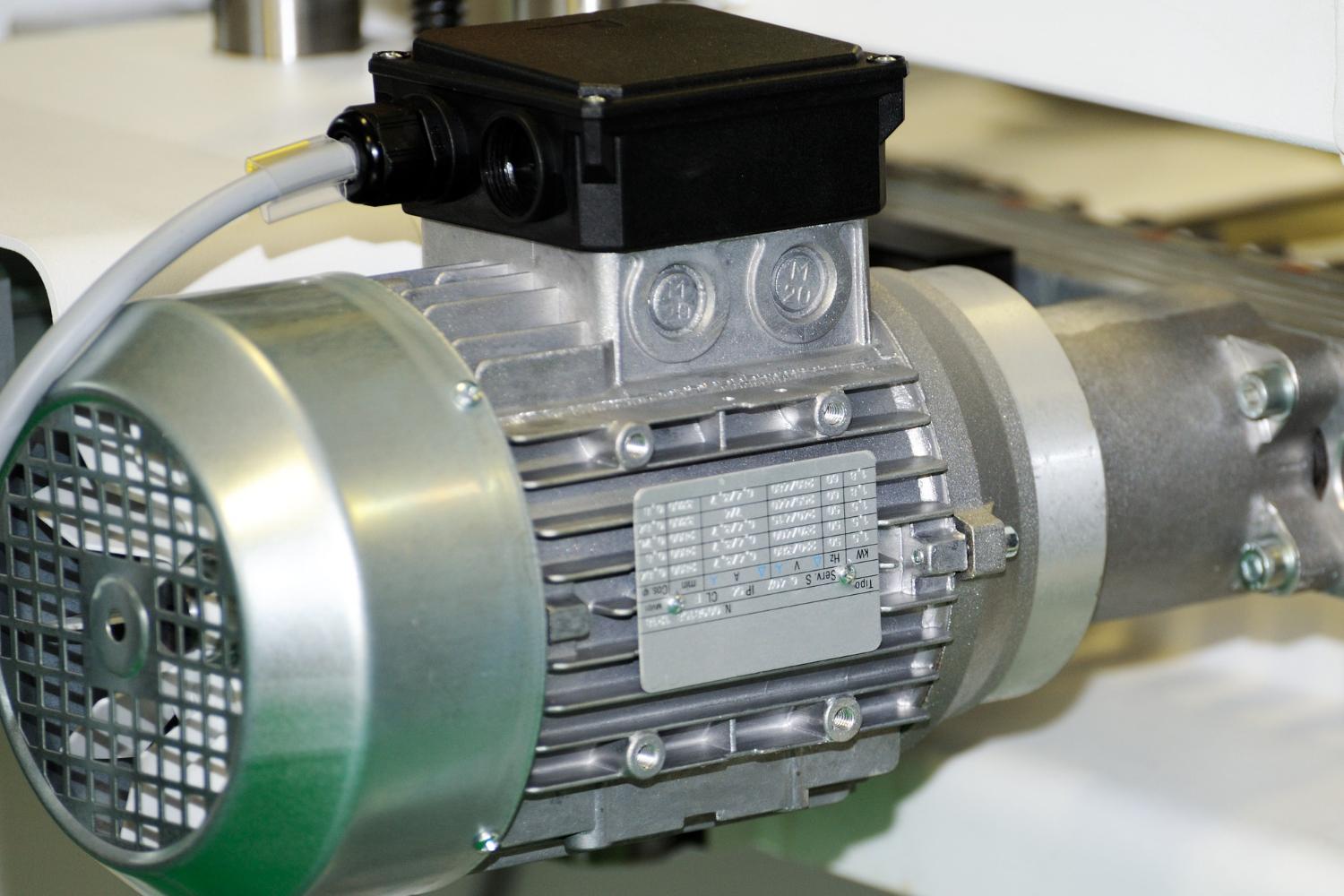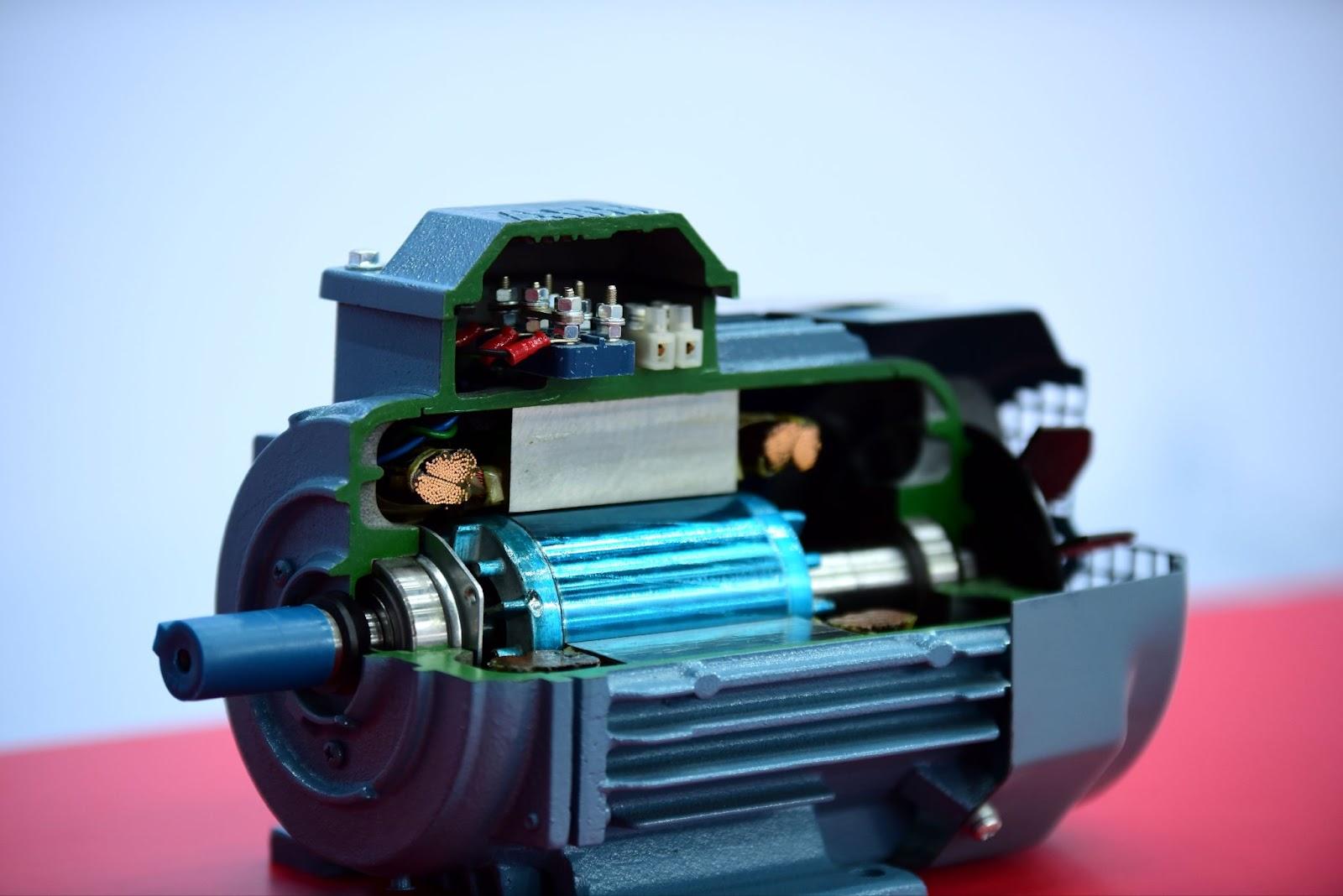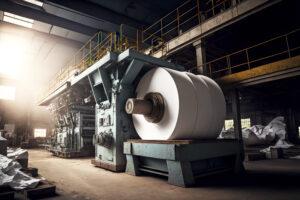
Industrial operations depend heavily on motor selection for optimal performance and cost control. The choice between synchronous and asynchronous motors affects everything from energy consumption to maintenance schedules. Knowledge of these fundamental differences helps engineers and facility managers make informed decisions. When choosing from various electric motors available, the operating principles distinguish these two primary motor categories significantly.
What Is a Synchronous Motor?
A synchronous motor represents a specialized type of AC motor where the rotor maintains perfect speed alignment with the stator’s rotating magnetic field. This precise synchronization eliminates slip entirely, meaning the rotor speed equals the synchronous speed determined by supply frequency and pole configuration.
Construction and Components
The construction involves a stator housing three-phase windings that create a rotating magnetic field when energized. The rotor contains either electromagnets or permanent magnets, providing a constant magnetic field. Permanent magnet motor designs have gained popularity due to their enhanced efficiency and compact size. These motors eliminate the need for separate field windings while maintaining superior performance characteristics.
Field-wound synchronous motors require an external DC power supply to energize the rotor windings, creating the necessary magnetic field for operation. This DC excitation system typically connects through slip rings and brushes, adding complexity but enabling precise field control. The interaction between the rotating stator field and constant rotor field produces consistent torque at synchronous speed.
Starting Characteristics
Starting presents unique challenges since synchronous motors cannot self-start from a standstill. The rotor must reach near-synchronous speed before magnetic locking occurs. Manufacturers address this limitation through several methods:
- Damper windings: Squirrel cage conductors embedded in rotor poles provide starting torque
- Auxiliary starting motors: External motors bring the rotor up to synchronous speed
- Variable frequency drives: Electronic control systems gradually increase frequency during startup
- Reduced voltage starting: Lower voltage minimizes starting stress on the system
These motors excel in applications requiring constant speed regardless of load variations. Power stations, manufacturing facilities, and voltage regulation systems frequently employ synchronous motors. Their ability to operate at leading, lagging, or unity power factor makes them valuable for electrical system optimization.
What Is an Asynchronous Motor?
An asynchronous motor, commonly called an induction motor, operates on electromagnetic induction principles where the rotor speed always lags behind the stator’s rotating magnetic field. This speed difference, known as slip, remains essential for torque generation and typically ranges from 2-5% under normal operating conditions.
Rotor Design Variations
The stator construction resembles that of synchronous motors, featuring three-phase windings distributed around the circumference. However, the rotor design differs significantly:
Squirrel Cage Rotor Design:
- Aluminum or copper bars short-circuited by end rings
- Simple, robust construction with no external connections
- Self-starting capability with moderate starting torque
- Lower manufacturing costs and minimal maintenance requirements
Wound Rotor Design:
- Insulated windings connected to external resistors through slip rings
- Variable speed control through external resistance adjustment
- Higher starting torque capabilities
- Increased complexity but greater operational flexibility
Operating Principles
Induction motor operation begins when the stator receives AC motor power, establishing a rotating magnetic field. This field cuts through the rotor conductors, inducing currents according to Faraday’s law. The induced currents create their own magnetic field, which interacts with the stator field to produce torque. The rotor accelerates toward synchronous speed but never reaches it during normal operation.
Self-starting capability represents a major advantage of asynchronous motors. The starting torque develops automatically when power is applied, eliminating the need for auxiliary starting equipment. This simplicity contributes to their widespread adoption across industrial applications. Load changes affect rotor speed proportionally – increased load causes greater slip and reduced speed.
These motors demonstrate exceptional reliability due to their simple construction and minimal maintenance requirements. The absence of slip rings, brushes, or external excitation systems reduces potential failure points. Manufacturing costs remain lower compared to synchronous alternatives, making them economically attractive for many applications.
Synchronous vs Asynchronous Motor: Core Differences
Synchronous vs asynchronous motor characteristics reveal fundamental operational distinctions that influence application suitability. Let’s highlight the critical performance parameters in the following comparison:
| Feature | Synchronous Motor | Asynchronous Motor |
|---|---|---|
| Speed Regulation | Constant at all loads | Decreases with load |
| Starting Method | Requires auxiliary system | Self-starting |
| Power Factor | Adjustable (leading/lagging) | Lagging only |
| Efficiency | High at rated load | Good across the load range |
| Construction Cost | Higher | Lower |
| Maintenance | Moderate complexity | Minimal requirements |
| Slip | Zero during operation | 2-5% under normal load |
| Speed Control | Electronic drives required | Natural load response |
Performance Characteristics
Speed control capabilities differ dramatically between these motor types. Synchronous motors maintain constant speed regardless of load variations, making them ideal for timing applications and processes requiring precise speed control. DC motor applications often require similar precision, but synchronous motors provide this benefit with AC motor power supplies.
Power factor characteristics significantly impact electrical system design. Synchronous motors can operate at unity power factor or even leading power factor when overexcited, helping correct lagging power factor caused by other equipment. This capability provides several benefits:
- Reduced utility power factor penalties
- Improved overall system efficiency
- Lower voltage drops in distribution systems
- Enhanced power quality for sensitive equipment
Asynchronous motors always operate at lagging power factor, which may require additional power factor correction equipment in facilities with many such motors.
Torque and Starting Performance
Starting torque patterns vary considerably between motor types:
Synchronous Motors:
- Lower starting torque capability
- Require careful application sizing
- May need soft-start systems for heavy loads
- Permanent magnet motor designs offer improved starting characteristics
Asynchronous Motors:
- High starting torque, especially in squirrel cage designs
- Natural overcurrent protection during starting
- Well-suited for high-inertia loads
- Various starting methods are available (star-delta, soft-start, VFD)
Efficiency comparisons show synchronous motors achieving higher efficiency at rated load conditions, particularly when incorporating permanent magnet motor technology. However, asynchronous motors maintain relatively good efficiency across a broader load range, making them suitable for variable load applications.
Motor Selection Criteria and Applications

AC motor applications in industrial settings demonstrate clear preferences based on operational requirements. Large-scale industrial processes favor asynchronous motors for their reliability and cost-effectiveness. Understanding the selection criteria helps optimize both performance and cost outcomes.
How to Choose the Right Motor for Your Application
Selecting between synchronous and asynchronous motors requires a systematic evaluation of multiple factors. The decision impacts not only initial costs but also long-term operational efficiency and maintenance requirements. You should focus on these primary selection factors:
Load Requirements Analysis:
- Constant vs. variable torque demands
- Starting torque specifications
- Speed regulation tolerance
- Duty cycle considerations (continuous, intermittent, or cyclic)
Operational Environment:
- Ambient temperature ranges
- Humidity and moisture exposure
- Dust and contamination levels
- Vibration and shock conditions
- Available space constraints
Electrical System Compatibility:
- Available power supply characteristics
- Power factor requirements
- Harmonic distortion limitations
- Starting current restrictions
Economic Considerations:
- Initial purchase and installation costs
- Energy consumption over motor lifetime
- Maintenance and service requirements
- Downtime costs and reliability needs
Industry-Specific Motor Applications
Different industries have developed preferences based on their unique operational requirements. The following table outlines optimal motor choices for various industrial sectors:
| Industry Sector | Preferred Motor Type | Key Applications | Primary Reasons |
|---|---|---|---|
| Water Treatment | Asynchronous | Pumps, blowers, mixers | Reliability, self-starting, cost-effective |
| Steel Manufacturing | Synchronous | Rolling mills, large compressors | Precise speed control, high power ratings |
| Chemical Processing | Asynchronous | Centrifugal pumps, agitators | Chemical resistance, simple maintenance |
| Power Generation | Synchronous | Generators, exciter systems | Power factor control, grid stability |
| Food & Beverage | Asynchronous | Conveyors, mixers, packaging | Washdown capability, variable speeds |
| Automotive | Synchronous | Assembly lines, robotics | Precise positioning, rapid response |
| HVAC Systems | Asynchronous | Fans, pumps, chillers | Energy efficiency, variable speed capability |
| Mining Operations | Asynchronous | Conveyors, crushers, mills | Rugged construction, high starting torque |
| Textile Manufacturing | Synchronous | Spinning machines, looms | Constant speed, synchronization requirements |
| Paper & Pulp | Asynchronous | Paper machines, pumps | Continuous operation, variable load handling |
Application-Specific Considerations
DC motor advantages become apparent in precision control scenarios requiring exact speed regulation and rapid response to control signals. Robotics applications, CNC machining centers, and automated assembly lines often specify DC motor solutions despite higher costs and maintenance requirements. These applications prioritize performance over simplicity.
Permanent magnet motor benefits extend beyond simple efficiency gains. High torque density enables compact machine designs while reducing energy consumption. Electric vehicle applications increasingly adopt this technology for its superior power-to-weight ratio. Industrial applications benefit from:
- Reduced cooling requirements and simplified thermal management
- Lower noise levels during operation
- Improved dynamic response characteristics
- Enhanced energy efficiency across load ranges
Maintenance, Service, and Brand Considerations

Maintenance requirements differ substantially between synchronous and asynchronous motor designs. Understanding these differences helps facility managers plan maintenance schedules and allocate resources effectively.
Maintenance Requirements by Motor Type
Asynchronous Motor Maintenance: Asynchronous motors require minimal scheduled maintenance beyond bearing lubrication and routine inspections. The absence of slip rings, brushes, and external excitation systems eliminates common wear components found in other motor types. Typical maintenance activities include:
- Bearing lubrication every 6-12 months
- Annual electrical testing and insulation resistance checks
- Vibration monitoring for early fault detection
- Thermal imaging to identify hot spots
- Cleaning and inspection of cooling fans and air passages
Synchronous Motor Maintenance: Synchronous motors demand more attention due to their additional components. Brush maintenance, slip ring cleaning, and excitation system monitoring require specialized knowledge and regular service intervals:
- Brush inspection and replacement every 3-6 months
- Slip ring cleaning and resurfacing as needed
- Excitation system calibration and testing
- External DC power supply system maintenance and monitoring
- Damper winding inspection for starting system integrity
Permanent magnet motor designs reduce some maintenance needs by eliminating brushes and slip rings, but magnetic strength monitoring becomes necessary to detect potential demagnetization over time.
Professional Service and Support
Professional motor services play a crucial role in maximizing motor performance and lifespan. Regular vibration analysis, thermal imaging, and electrical testing can identify potential problems before they cause costly failures. Predictive maintenance programs tailored to specific motor types provide significant value through:
- Early fault detection and prevention
- Optimized maintenance scheduling
- Reduced unplanned downtime
- Extended equipment life
- Improved energy efficiency through proper maintenance
Quality and Brand Selection
Quality considerations when selecting electric motor brands affect long-term reliability and performance. Established manufacturers provide comprehensive documentation, readily available spare parts, and technical support. Motor standardization simplifies maintenance procedures and reduces inventory requirements across facilities. Key factors in brand selection include:
Manufacturing Quality:
- ISO 9001 certification and quality management systems
- Advanced testing procedures and quality control
- Consistent performance specifications across production runs
- Robust construction suitable for intended applications
Technical Support:
- Application engineering assistance
- Training programs for maintenance personnel
- Troubleshooting support and technical documentation
- Field service capabilities and response times
Parts Availability:
- Standardized components across product lines
- Global distribution network for spare parts
- Reasonable lead times for replacement components
- Backward compatibility for older motor models
Future Technology Trends
Service accessibility influences motor selection for remote or critical applications. DC motor systems may require specialized technicians, while standard AC motor designs can often be serviced by general electrical maintenance staff. This factor becomes particularly important for facilities with limited technical resources.
Future trends in motor technology point toward increased efficiency requirements and smart monitoring capabilities:
Efficiency Regulations:
- Energy efficiency regulations continue tightening globally
- Premium efficiency ratings becoming standard requirements
- Favoring high-efficiency designs regardless of motor type
- Lifecycle cost analysis becoming more important than initial cost
Smart Motor Technology:
- Internet-of-Things integration enables remote monitoring
- Predictive maintenance strategies based on real-time data
- Condition monitoring sensors built into motor designs
- Integration with facility management systems
Environmental Considerations:
- Reduced rare earth material dependence in permanent magnet motor designs
- Recyclable materials and sustainable manufacturing processes
- Lower energy consumption contributing to carbon footprint reduction
- Compliance with environmental regulations and sustainability goals
Making the Right Motor Choice for Your Facility
Motor selection between synchronous and asynchronous designs requires careful evaluation of speed control needs, starting requirements, efficiency goals, and maintenance capabilities. Asynchronous motors offer simplicity and cost-effectiveness for general industrial applications, while synchronous motors provide precision and efficiency for demanding processes. DC motor and permanent magnet motor technologies continue advancing, providing additional options for specialized applications. Understanding these fundamental differences enables optimal motor selection that balances performance requirements with operational constraints and long-term costs. Your decision ultimately depends on specific application requirements, environmental conditions, and economic considerations that vary significantly across industrial sectors.










